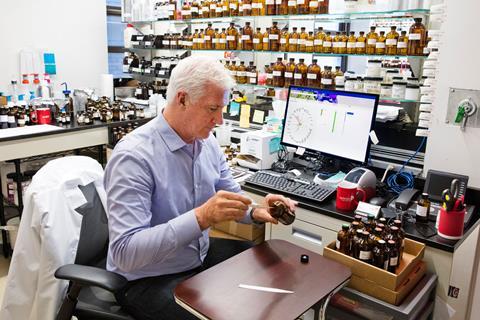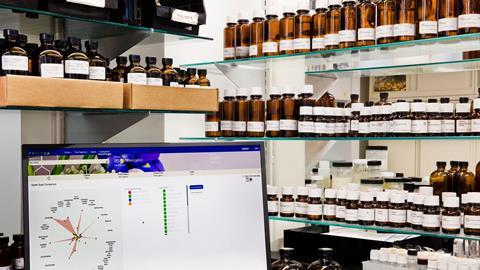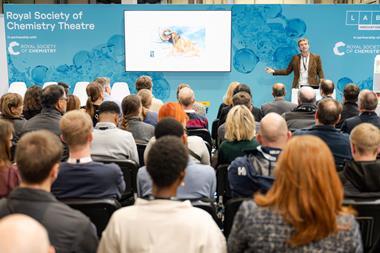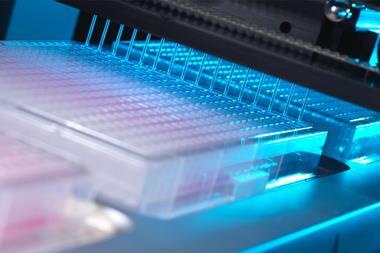Designed experiments make the humble trial and error method smarter, faster and cheaper
There is a certain mythology around inventors who prevail using ‘trial and error’ techniques. James Dyson famously makes a large number of prototypes in the design of new products. He produced 5127 models on the way to creating Britain’s bestselling vacuum cleaner. More recently, his company worked its way through $71 million and 1000 miles of human hair, creating 600 prototypes for a supersonic hairdryer. Not every company has the resources of Dyson today. Many have limited budgets and need experimental approaches that achieve project outcomes with less total work. And many need to ensure predictable results every time they develop new products and devise production processes.
Join our webinar on 2 June 2020 at 12pm (BST) with Symrise, where we will be discussing the techniques and approaches to experimentation that contribute to their growing success.
Thomas Edison’s pursuit of the incandescent lightbulb is held up as the ultimate example of trial and error. He tested thousands of materials and demanded a relentless work ethic from his team. Whether historically accurate or not, Edison is remembered for his resource-hungry methods and his own disregard for the need for sleep.
In today’s uncertain world, most organisations simply do not have access to the time and resources to take a similar route, even if it were sustainable. Rapid innovation requires a different approach. The demand for a high level of product and process innovation means researchers and engineers are constantly under pressure. Those being called upon to respond to the current coronavirus pandemic are facing incredible challenges, where the speed of a scientific breakthrough could make the difference between life or death for millions of people. Even during times of ‘business as usual’, researchers are in a race to uncover hidden insights, drive down costs and get to market faster than the competition, then continually improve products and reduce costs throughout production.
Structured trial and error involving multiple trials, while varying many potential causal factors, is ultimately a faster and safer way to achieve process understanding
Bradley Jones, principal research fellow at JMP
A statistically designed approach to experimentation helps scientists and engineers work more productively with limited resources to extract valuable insights from their experiments. They become better placed to reduce product development costs and speed up time to innovation.
How does a quality approach affect output?
Designing an approach to innovation means extending quality practices to the entire development life cycle. It starts with driving up the quality of experimentation using strategic, data-driven methods. Researchers can evaluate multiple parameters in the same experiment, speeding research processes and generating consistent, high-quality data. Bradley Jones, principal research fellow at JMP, describes it simply as a ‘structured’ or ‘smart’ approach to trial and error:
Structured trial and error involving multiple trials, while varying many potential causal factors, is ultimately a faster and safer way to achieve process understanding. Investigating more potential factors in a process study exponentially expands the opportunity space for discovery. So, a key element of smart trial and error is generating a list of potential causal factors that the investigating team thinks are likely to affect the measured process outcomes.
Given this list, there is a mathematically sound way to come up with a series of trials that allows for identifying which potential causal factors have the largest effects by changing the settings of multiple causal factors over the series of trials. We call this series of trials a designed experiment.
Designed experiments are critical for realising the benefits of data analytics quickly. The approach helps businesses make better decisions faster and meet project milestones more predictably. This in turn helps to reduce stress levels on individuals, leading to more productive, efficient teams.
Shortening the development cycle
The world of scents and tastes is a huge, invisible part of modern life. German company Symrise AG estimate that consumers interact with flavours and fragrances between 20 and 30 times a day. Symrise commands 11% of the global taste and smell market, with its creations appearing across 30.000 products in more than 100 countries. Symrise faces constant pressure to keep innovating, not only by creating new flavours and smells, but also by perfecting formulas to make products more sustainable. The company invests significantly in research and development in the pursuit of new patents.

Using designed experiments means Symrise can tweak and rework formulas easily, replicating what is good and changing what needs to improve . For each product, there might be several natural ingredients with a wide range of variables. Each ingredient and resulting product needs to be tested and measured for efficacy, safety and other factors.
Fragrance and flavour development can be challenging because of the complex nature of the manufacturing process. In an environment of constant creation, it is important that new scents and flavours are developed and tested quickly to ensure they can reach the market swiftly. It is equally important for experiments to be easily replicable, both in scale and in formulation.
Creating interactive visualisations enables research and development experts to make decisions based on data that might not otherwise have been possible. The ability to manipulate visuals in real time is especially important in formulation work, where ingredients must be tweaked on a very small scale. Developing this efficiency has helped the company optimise production overall by extracting more meaningful information from its data in far less time.
Symrise has been able to shorten its product development cycle, arriving at the right product formulation earlier and taking finalised products to market faster. The time saved has allowed the organisation to expand its remit and increase output without increasing headcount.
Whatever the next breakthrough being pursued, a quality approach to experimentation ensures the ability to drive quality manufacturing processes, delivering innovation at scale, with consistency and dependability.
Join our webinar on 2 June 2020 at 12pm (BST) with Symrise, where we will be discussing the techniques and approaches to experimentation that contribute to their growing success.


















No comments yet